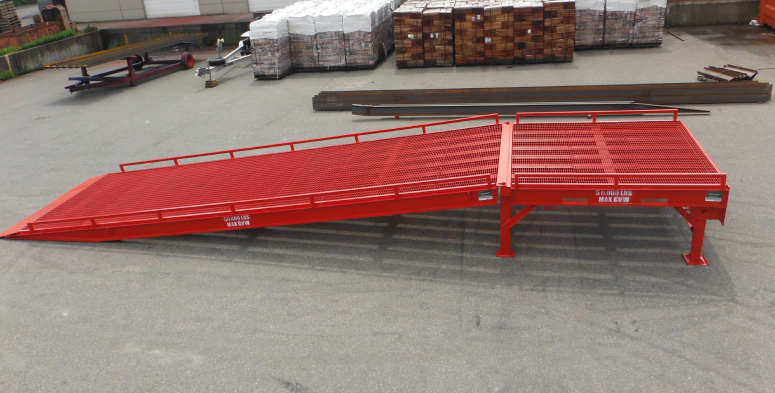Choosing the Right Loading Ramp for Your Business
Loading ramps are an essential tool for businesses that require loading and unloading heavy equipment, vehicles, or materials. Choosing the right loading ramp can be a challenging task, as there are several types of ramps available in the market. In this article, we will discuss the factors you should consider when selecting a loading ramp for your business.
Type of Equipment or Vehicle
The first factor to consider when choosing a loading ramp is the type of equipment or vehicle you need to load or unload. Different types of ramps are designed for different purposes. For example, if you need to load and unload a forklift, you may require a forklift ramp with a higher weight capacity than a regular loading ramp. Similarly, if you need to load and unload trucks or trailers, you may need a truck ramp that can accommodate the height and weight of the vehicle.
Weight Capacity
The weight capacity of a loading ramp is another critical factor to consider. You should choose a ramp that can handle the weight of the heaviest equipment or vehicle you need to load or unload. It is also essential to consider the weight distribution of the load, as unevenly distributed weight can cause the ramp to buckle or fail. Make sure to check the weight capacity of the ramp before purchasing or renting it.
Length and Width
The length and width of the loading ramp are also essential factors to consider. The length of the ramp will determine the incline angle and the height it can reach. The width of the ramp will determine the space available for the equipment or vehicle to pass through. You should choose a ramp that is long enough to reach the desired height and wide enough to accommodate the equipment or vehicle you need to load or unload.
Surface Type
The surface type of the loading ramp is another critical factor to consider. Loading ramps come in various surface types, including serrated steel, aluminum, or wood. The surface type should provide sufficient traction to prevent slipping and ensure the safe passage of the equipment or vehicle. For example, steel ramps with serrated surfaces are ideal for loading and unloading heavy equipment or vehicles, while aluminum ramps are lightweight and suitable for small vehicles.
Usage Frequency
The frequency of usage is also an essential factor to consider when choosing a loading ramp. If your business requires frequent loading and unloading of heavy equipment or vehicles, you may need to invest in a permanent or semi-permanent ramp. On the other hand, if you only require a ramp occasionally, a portable ramp may be a more cost-effective solution.
Budget
Lastly, the budget is an essential factor to consider when choosing a loading ramp. Loading ramps come in various price ranges, and you should choose one that fits your budget while also meeting your requirements. However, it is essential to note that investing in a high-quality ramp may be more cost-effective in the long run, as it will last longer and require less maintenance.
In conclusion, choosing the right loading ramp for your business requires careful consideration of factors such as the type of equipment or vehicle, weight capacity, length and width, surface type, usage frequency, and budget. By taking these factors into account, you can ensure that you choose a loading ramp that meets your requirements and provides a safe and efficient loading and unloading experience.




